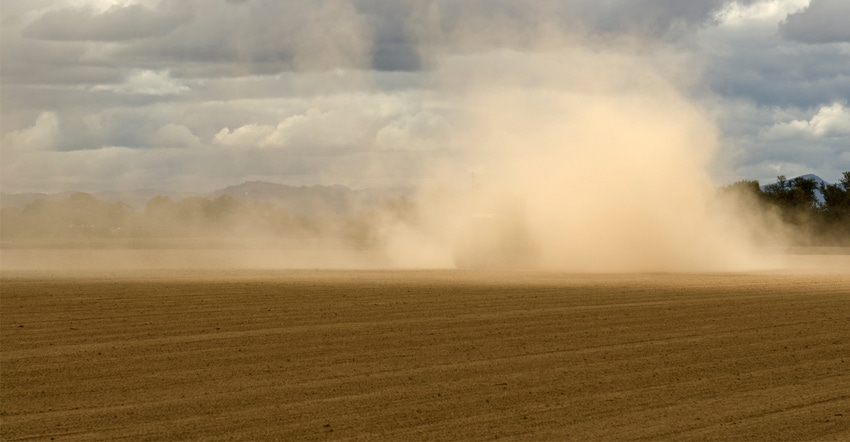February 7, 2017

A dust devil is a local rotating wind formed on the ground. Dust devils are technically classified as minor whirlwinds, meaning they’re just wind and not connected to a storm. Essentially, dust devils are columns of spinning air that pick up dust and dirt.
Most dust devils don’t last longer than a minute or two, but some stronger instances can carry on for 20 minutes or more and have winds up to 75 miles per hour! Odds are more likely that you’ve seen the short-lived kind twisting across a field at one time or another.
When to look
A dust devil forms usually under clear skies and calm conditions. There might be a very light wind with relatively cool air temperatures.
A dust devil is formed when a rising pocket of warm air pushes through the cooler atmosphere above the ground. On a clear day, the sun heats the ground, and the ground in turn warms the air immediately above it.
This hot air is less dense than the cooler air higher up, so the hot air rises. If there is just a little wind and the proper conditions, this rising air may begin to rotate and stretch vertically, inducing faster rotation. The rotating column, if strong enough, can create suction to pull in more hot air from the surrounding area and pick up dust and dirt from the surface.
That’s what creates the spinning dust cloud most people associate with this phenomenon. Dust devils dissipate when the source of hot air runs out or winds shift and disrupt the flow.
Dust devils are usually harmless but can sometimes cause problems. If wind speeds get high enough, dust devils can actually move larger objects or cause property damage similar to a very weak tornado. Strong dust devils are sometimes erroneously reported as weak tornadoes despite the lack of a thunderstorm.
Where to look
Airports, with large areas of open space, report dust devils interfering with taxiing, takeoffs and landings. The actual dust kicked up can cause breathing problems as well, especially in desert or sandy climates.
Dust devils are most common in desert areas but can happen basically anywhere if the conditions are right. Coincidentally, the conditions are frequently right in one unusual place: Mars. NASA frequently reports dust devils on the Red Planet, many times larger than those observed on Earth, too. It’s further proof that this phenomenon can truly happen almost anywhere.
Eggert is with the Indiana State Climate Office. He writes from West Lafayette.
About the Author(s)
You May Also Like




